Forty million Americans suffer with tree pollen allergies in spring. Do you know which trees are causing you grief? Allergic Living brings you this exclusive region-by-region field guide to the trees of allergies. For the Canadian guide, click here.
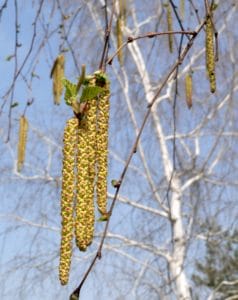
spewing pollen to find
a female match.
SPRING is in the air. Which means across America, virile male trees are busily spreading their highly allergenic pollen. The microscopic grains float around like a fog, blanketing some areas with a yellowish-green mist. Even when you can’t see pollen, it’s there, causing up to 40 million Americans to endure itchy eyes, painful congestion, running noses and sleepless nights.
Certain trees are notorious pollinators. Gender also plays a role: male dioecious (separate sexed) trees trigger the worst reactions, although monoecious (dual sexed) aren’t much better. Since avoidance is one of the strategies to fight hay fever, it’s helpful to know which trees are the most allergenic – and where to find them.
Tree Pollen Field Guide: Western States
Juniper trees make spring the sneezing season in Colorado, says Susan Kirkpatrick, a certified pollen counter and an asthma educator with The William Storms Allergy Clinic in Colorado Springs. Poplar, cottonwood, aspen, elm, maple, alder and oak trees bring a parade of unhappy patients into clinics, too.
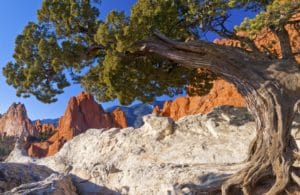
tree for their hay fever.
Finally, Coloradans should also beware the lodgepole pine, says Thomas Ogren, a horticulturist and author of Allergy-Free Gardening: The Revolutionary Guide to Healthy Landscaping.
In Washington state, it’s the cedar, juniper, alder, birch, poplar and cottonwood trees that bring on hay fever symptoms, says Dr. Frank Virant, who heads the division of allergy at Seattle Children’s Hospital. Also sure to trigger allergies for some western residents are walnut and holly trees.
Down in California, the eucalyptus tree is emerging as a cause of seasonal symptoms – perhaps no surprise, given its ubiquity. “They say that you can drive from San Francisco to San Diego along the coast and never be out of sight of a eucalyptus tree,” says Ogren.
The silver wattle, almond and casuarinas (also known as beefwood or she-oaks) are some other relatively common allergy-producing trees in the west. Not to mention camphor trees. “The streets of Los Angeles are lined with camphor trees that are 100 years old and they’re gorgeous,” says Ogren. “But the people who live on those streets get quite miserable.”
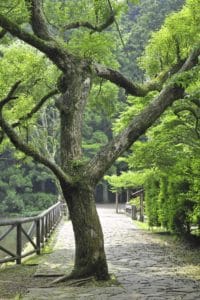 These century-old camphor trees in L.A. are highly allergenic.
These century-old camphor trees in L.A. are highly allergenic. The allergy prone ought to also be wary of these other California trees: Catalpas (also called stogie trees, as native Indians used to dry the leaves, cut off the ends and smoke them like cigars); bottle brush, whose red flowers resemble baby-bottle brushes; Cryptomeria (also called Japanese cedar, these trees are the No. 1 cause of allergy in Japan, according to Ogren); Cyprus trees; box elder and ash-leaf maple.
Tree Pollen Allergy Tour: South Central
Texas has gained notoriety as an allergy hot spot, beginning even in winter, as the mountain cedar (in fact, not a cedar at all – it’s a species of juniper) pollinates and blankets entire sections of the state, says Virant.
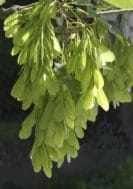 Box elder is a big trigger.
Box elder is a big trigger. Its allergenic reach stretches from Austin to Dallas and beyond. The Edwards Plateau in Texas has the largest population of the mountain cedar, also called Ashe Juniper or Juniperus ashei, which some claim is the biggest contributor to “cedar fever.”
The mountain cedar pollinates early in the season, and following close on its heels are the Eastern Red-Cedar, or Juniperus virginiana, as well as the oak – both seriously sneeze-inducing trees, which spread their windborne pollen through the end of spring.
Elsewhere in the south central region, cedars, elms, ash, maples, and box elders wreak havoc among allergy sufferers at this time of year.
Tree Pollen Allergy Tour: South Atlantic
In Florida, beware the olive tree. “Of all the trees, among the ones that are the most allergenic would be the olives, on a grain per grain basis,” says Ogren.
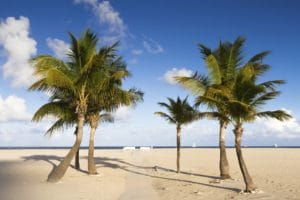 Trouble in paradise; the palm is a relative of grass, and also allergenic.
Trouble in paradise; the palm is a relative of grass, and also allergenic. A surprising offender to watch for is the palm tree, a favorite for low-water landscaping; Disney World, for example, has thousands of them. Unfortunately, they’re related to grasses, so if you’re allergic to grass pollen, you may also be sensitive to palm pollen.
The Chinese Pistache, too, is posing a problem in many areas. This hardy tree, which produces a beautiful fall color, is fast replacing another colorful tree, the Sweetgum, which is less allergenic but has aggressive roots that are destroying concrete sidewalks in many communities.
Florida is also home to the usual suspects that can be an allergy sufferer’s nightmare – junipers, cedars, elm and oak – as well as the casuarina, privet and laurel trees.
Tree Pollen Allergy Tour: North East
 That's not smoke – it's pollen erupting from a stand of pines.
That's not smoke – it's pollen erupting from a stand of pines. New Jersey is definitely “pine land,” says Dr. Donald Dvorin, certified pollen counter and co-founder of The Asthma Center, an allergy clinic with nine locations in Pennsylvania and New Jersey.
Pine tree pollen can become so dense, says Dvorin, that “it almost looks like smoke is coming out of the trees” – so much so that people unfamiliar with the phenomenon have been known to call the fire department.
Although one grain of pine pollen is about 100 microns in size – far smaller than the head of a pin – it’s relatively large compared to other pollen, making it less likely to be windborne, and also less likely to get into your airways and lungs. That’s partly why some experts don’t believe that pine pollen is a common allergen.
Still, according to Dr. John Costa, medical director of allergy clinical practice at Brigham and Women’s Hospital in Boston, “If you live in an area surrounded by pine trees and that pine pollen is falling directly downward and landing on your car, your deck and your lawn furniture, and then you touch these things and put your finger near your eye or nose, it can cause problems.”
Watch out for Oak and Mulberry Pollen
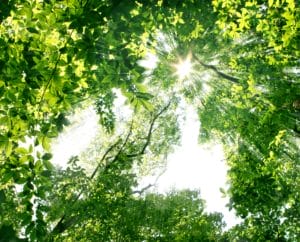 Slippery elms in Manhattan's Central Park rain pollen on passerby.
Slippery elms in Manhattan's Central Park rain pollen on passerby. Other top pollen-producing trees in New Jersey, New York and Pennsylvania, include juniper (no surprise there), elm (slippery elm, not the American variety that was all but wiped out by Dutch Elm Disease in past years), maple, birch, Sweetgums and cottonwood.
But the tree that produces the most pollen every year in the area is likely the tall stately oak.
“It’s in the top echelon of tree pollen production,” says Dvorin. It can produce anywhere from 1,000 to 3,000 pollen grains per cubic meter of air, which for one species, says Dvorin, is “tremendous.” (Experts say that, in most of the country, people become symptomatic when pollen counts are 200 per cubic meter and up.)
Thick yellow oak pollen is known to blanket the residential areas of Cherry Hill and Forked River, New Jersey.
“When you get a lot of windy weather, that’s when you see all the cars and roads coated, especially in the suburban residential areas,” says Dvorin. On those days, city workers get out the street cleaning machines, but that doesn’t do much to stem the symptoms of allergic residents, who, says Dvorin, “for the most part just grin and bear it.”
In New York City, male mulberry trees pose a significant allergy problem, according to Ogren. They line the streets in many neighborhoods, chosen by arborists and landscapers because they resist disease and insects, withstand smog and, like all male trees, produce no messy fruit or flowers.
However, it’s only the male trees that produce troublesome pollen, says Ogren, who is promoting a sex change in tree planting to help solve the mulberry pollen problem.
Tree Pollen Allergy Tour: Midwest
 In the Midwest, alder is an earlier pollinator.
In the Midwest, alder is an earlier pollinator. This region has the typical allergen-producing trees, including the juniper. In general, trees pollinate in two- or three-week intervals The early trees – think maple, juniper, elm, ash, alder – spread their seeds in March and early April, while the later trees – oak, birch, walnut, mulberry, cottonwood/poplar and pine – cause more problems from mid-April to the end of May.
Juniper is one of the biggest culprits in places such as Kansas City, Missouri. Also topping the list of spring pollen producers in this area are pine and elm trees. Elms can flower at two distinct times – as early as January in some areas and not until April in others.
Elms also have Chicago residents around the tissue box in springtime. Other troublesome trees in the Windy City and surrounding area include ash, maple and oak, according to local allergists.
In Salt Lake City, Utah, the ash-leaf maple, white mulberry and green ash typically top the tree allergy list, causing residents to reach for their antihistamines and decongestants.
But the worst offender is the box elder. The bane of allergy sufferers in Salt Lake, and all across the country, it produces more pollen than any other maple anywhere.
See also:
Top Tips for Managing Tree Allergies
10 Biggest Pollen Allergy Questions
Allergic Living gratefully acknowledges Dr. Richard Weber, vice president of the American College of Allergy, Asthma and Immunology and professor of medicine at the University of Colorado and National Jewish Health, for reviewing this article.





